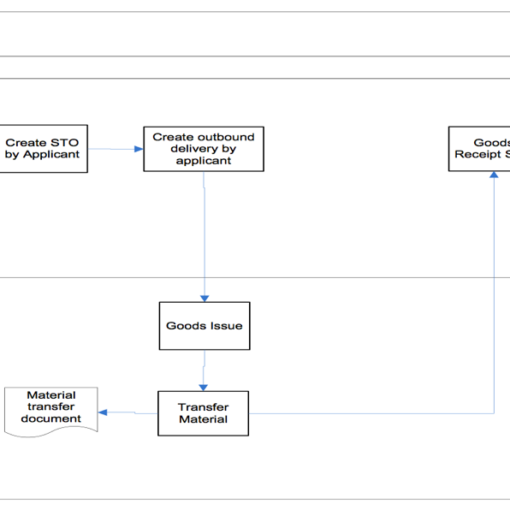SAP, or Systems, Applications, and Products in Data Processing, has revolutionized the way businesses operate by providing a comprehensive suite of enterprise software. Among the myriad offerings, SAP Best Practices stand out as a beacon of efficiency and innovation, guiding organizations toward streamlined processes and optimal performance.
Introduction to SAP Best Practices
What is SAP?
SAP is a global leader in enterprise software, offering solutions for various business functions such as finance, manufacturing, and human resources. SAP Best Practices, a subset of SAP solutions, encapsulates industry-specific processes and methodologies designed to enhance operational excellence.
Importance of Best Practices
Implementing SAP Best Practices is not merely an option; it’s a strategic necessity. These best practices serve as a roadmap for organizations, ensuring they leverage SAP’s capabilities to the fullest extent.
SAP Best Practices
Before the Acknowledge stage, Ivan utilized the Bicycle Organization’s business cycles to decide the extent of the SAP arrangements. The situations accessible by SAP depend on the SAP Best Practices business processes.
What are SAP Best Practices?

SAP Best Practices give prepared to-run digitized logical and functional and integrative business processes (purported scope things) for an undertaking.
For what reason is the Bicycle Organization involving SAP Best Practices in this undertaking?
- Processes depend on encounters from client projects
- Adaptable and particular arrangement is conceivable
- Computerized pre-arrangement speeds up the execution
Top Skills Required to Excel as a SAP MM Consultant
Benefits of Implementing SAP Best Practices
Increased Efficiency
One of the primary advantages of adopting SAP Best Practices is the significant boost in operational efficiency. By aligning business processes with industry standards, organizations can reduce redundancy and improve overall productivity.
Cost Savings
In the dynamic business landscape, cost management is crucial. SAP Best Practices contribute to cost savings by optimizing workflows, minimizing errors, and providing insights that enable informed decision-making.
Streamlined Processes
Efficiency and simplicity go hand in hand. SAP Best Practices facilitate streamlined processes, eliminating unnecessary complexities and ensuring that every operation contributes to the overarching goals of the organization.
Key Components of SAP Best Practices
Standardization
Standardization is the cornerstone of SAP Best Practices. By adhering to standardized processes, organizations create a foundation for consistency, scalability, and ease of management.
Continuous Improvement
SAP Best Practices aren’t static; they evolve with industry trends. Continuous improvement is embedded in the DNA of SAP, allowing organizations to stay ahead of the curve and adapt to changing business landscapes.
Integration
Integration is key to achieving synergy across different departments. SAP Best Practices emphasize seamless integration, breaking down silos and fostering collaboration among various business functions.
Industries That Can Benefit from SAP Best Practices
Manufacturing
In the manufacturing sector, precision and efficiency are paramount. SAP Best Practices offer tailored solutions for manufacturers, optimizing production processes and supply chain management.
Finance
Financial institutions benefit from SAP Best Practices by gaining real-time insights, ensuring regulatory compliance, and enhancing risk management.
Healthcare
In the healthcare industry, where data security and accuracy are critical, SAP Best Practices provide a robust framework for patient care, resource optimization, and compliance.
Implementation Challenges and Solutions
Common Challenges
While implementing Practices, organizations may face challenges such as resistance to change, data migration complexities, and integration issues with existing systems.
Strategies for Successful Implementation
Overcoming these challenges requires meticulous planning, effective change management, and collaboration between stakeholders. Engaging employees through training programs and providing adequate support can significantly ease the transition.
Real-life Case Studies
Success Stories
Numerous organizations have reaped the benefits of Practices. Case studies highlight successful implementations, demonstrating tangible improvements in operational efficiency, cost savings, and customer satisfaction.
Lessons Learned
Analyzing the lessons learned from both successful and challenging implementations provides valuable insights for organizations planning to adopt Practices.
Customization and Adaptability of SAP Best Practices
Tailoring for Specific Industries
Practices are not one-size-fits-all. Organizations can tailor these practices to suit their specific industry requirements, ensuring a customized approach that aligns with business goals.
Scalability
Whether a startup or an enterprise, SAP Best Practices are designed to scale. As businesses grow, the flexibility and scalability of SAP solutions enable seamless expansion without compromising efficiency.
Best Practice Degree Thing Content
The degree thing itself gives the accompanying data to a particular interaction:
Scope thing reality sheets:
A depiction of the business interaction including business advantages and key cycle steps covered.
Process stream:
A portrayal of the business cycle to show how the product fills in as standard.
Process stream (BPMN2):
A portrayal of the business cycle to show how the product fills in as standard, for showing and altering in process displaying applications (for instance SAP Signavio).
Test scripts:
A technique for testing the enacted framework as per the characterized business process.
Set-up Directions:
A manual for the means expected to set up any combinations expected for the business interaction to accurately work. The arrangement guide should be finished preceding the test script.
How to Get Started with SAP Best Practices
Initial Steps
Embarking on the Practices journey requires careful planning. Organizations should start by assessing their current processes, identifying key areas for improvement, and setting clear objectives.
Resources and Support
Accessing resources such as training programs, documentation, and support from SAP and its community is vital for a smooth implementation. Collaboration with experienced consultants can also expedite the learning curve.
Measuring Success and ROI
Key Performance Indicators
Defining and tracking key performance indicators (KPIs) is essential to measure the success of Practices implementation. Metrics such as process efficiency, cost savings, and user satisfaction provide valuable insights.
Continuous Evaluation
Success is an ongoing process. Continuous evaluation of Practices ensures that organizations remain agile, adapting to changes in the business environment and leveraging new opportunities.
Common Misconceptions about SAP Best Practices
Dispelling Myths
Myths and misconceptions about Practices can hinder adoption. Dispelling these myths, such as the belief that SAP is only for large enterprises, is crucial to ensuring that organizations of all sizes benefit from these best practices.
Clarifying Misunderstandings
Clear communication and education are key to clarifying misunderstandings. Providing accurate information about the capabilities and benefits of SAP Best Practices helps organizations make informed decisions.
Expert Opinions and Insights
Interviews with Industry Experts
Gaining insights from industry experts provides a deeper understanding of the potential of it. Expert opinions guide organizations in maximizing the value derived from these solutions.
Thought Leadership Perspectives
Exploring thought leadership perspectives on Practices offers a forward-looking view, helping organizations prepare for future challenges and opportunities in their respective industries.
Community Engagement and Knowledge Sharing
Forums and Networks
Engaging with the SAP community through forums and networks allows organizations to tap into a wealth of collective knowledge. Sharing experiences and learning from others contribute to a collaborative and supportive environment.
Collaborative Learning
They are not just a tool; they are a community. Collaborative learning ensures that organizations benefit not only from SAP’s expertise but also from the diverse experiences of other users.
Comparative Analysis with Other ERP Solutions
Strengths and Weaknesses
Comparing Practices with other ERP solutions provides organizations with insights into the strengths and weaknesses of each option. A thorough analysis helps in making an informed decision based on specific business requirements.
Choosing the Right Solution
Selecting the right ERP solution is a critical decision. Understanding the unique needs of the organization and aligning them with the features and capabilities of Practices ensure a harmonious fit.
Conclusion
Recap of Key Points
It offers a transformative journey for organizations seeking efficiency, innovation, and sustained growth. The key components, industry-specific benefits, and future trends discussed highlight the comprehensive nature of SAP’s solutions.
Encouragement for Implementation
Embarking on the SAP Best Practices journey may seem daunting, but the rewards are immense. Organizations are encouraged to take the first steps, leveraging the support and resources available to unlock their full potential.
FAQs
- Is it suitable for small businesses?
- Absolutely! SAP Best Practices are scalable and can be tailored to meet the specific needs of small businesses.
- How long does it take to implement Practices?
- The implementation timeline varies based on the complexity of the organization’s processes, but with proper planning, it can be a smooth transition.
- Are there ongoing costs associated with it?
- While there may be initial implementation costs, the long-term benefits often outweigh them. Ongoing costs include support and updates.
- Can SAP Best Practices be integrated with existing systems?
- Yes,They are designed for seamless integration with existing systems, ensuring a cohesive technological environment.
- What industries have seen the most significant improvements with Practices?
- Industries such as manufacturing, finance, and healthcare have reported substantial improvements in efficiency and performance.





